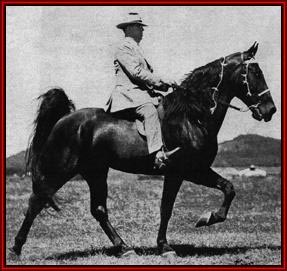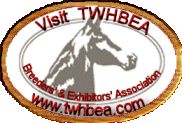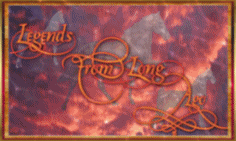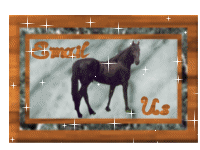
click on the fish  to translate this page into Chinese, Dutch, French, to translate this page into Chinese, Dutch, French,German, Greek, Italian,Japanese, Korean,Portuguese,Spanish, or Russian  MIDNIGHT SUN It was a big horse that lay covered in the hallway of the barn at Harlinsdale Farm, Franklin, Tenn., the afternoon of November 7, 1965. Indeed, he was a big horse in every way - in stature, name, fame, and posterity. Midnight Sun, a young 25, had become a legend years before his death that Indian summer afternoon. On his record, he was the big horse of the Tennessee Walking Horse breed. He was the first stallion to become world champion of his kind. That was in 1945 and 1946 at the Tennessee Walking Horse National Celebration at Shelbyville, Tennessee. Then he sired horses that were grand champions there seven times; grand-sired the supreme winner five times; and was the great-grandsire of nearly EVERY year's champion since that time. On only FOUR occasions since 1949, have horses NOT descended from Midnight Sun, in a straight male line, been world champions of this breed. If Midnight Sun had been foaled in 1930 instead of 1940, he would have acted on a small stage before a small audience, and for only local fame. However, he flashed on the scene with perfect timing. The nationwide discovery of the Tennessee Walking Horse afforded this remarkable individual, a big stage on which to perform before a large audience, and he responded gloriously to the opportunity. From being a humble, back-country type known in a few southern states, the Walking Horse started going places after the registry society was formed in 1935. It seemed that nearly everybody was reading about the Tennessee Walking Horse, and wanted to see this distinctive "new" breed in action. Great singers, actors, athletes, and horses are "box office", and the big, black, storybook stallion was prominent among the performers to sell the breed to the public. Horses are not a big money crop in the Volunteer State, but in the last 30 years, the Tennessee Walking Horse has brought in a lot of cash and numerous lookers, and Midnight Sun was high among those responsible. For years a guest book was kept at Harlinsdale by owners A. F. and W. W. Harlin, but the books filled up fast, and after the novelty wore off, they were discontinued. Some days the champ was brought out of his stall 20 times for visitors to see and have their pictures made with Midnight Sun. He was never ill-natured. A child could go into his stall and pet him. Many a youngster was given the thrill of "riding Midnight Sun." The big horse was cast in the heroic mold. When he finally matured, he averaged 1,350 pounds and appeared much taller than the "just under 16 hands" that he measured. He was distinctly large for a Walking horse, a robust but not tall breed. His home was his stall. He was never turned out in a paddock, but exercised daily under saddle between 30 minutes and an hour. The day before his death from colic, he was ridden at the walk and running walk about 30 minutes. The Tennessee Walking Horse may be thought of as a Cinderella breed, and Midnight Sun as an ugly duckling that matured into a swan. It was a farmer, the late Samuel M. Ramsey, at Viola, in the Tennessee hills west of Chattanooga and near McMinnville, who bred Ramsey's Rena, a bay mare of about 15.2 hands, to Wilson's Allen, a chestnut, at nearby Pelham. This was a couple of months before the latter's death from pneumonia on August 22, 1939. Rena died young after producing just 3 foals. Wilson's Allen was by Roan Allen, by Allen, from Birdie Messick by Allen, the Standardbred No. 1 foundation sire of the Tennessee Walking Horse. Rena was about 90% Standardbred. She was by Dement's Allen by Hunter's Allen, by Allen F-1, and her dam was by Bell Buckle, a registered trotter of Bow Bells and Wedgewood blood. The Registry gives the next dam as by John Covington's Hal, and the next as by "Galleston". This was a trotter, but not an American Standardbred. Old-timers in the Woodbury area who remember him say that the name was Galson. He was an imported black German Coach stallion, "nearly 17 hands and 1,500 pounds", owned by a stock company, and had cost $2,600. (English, German and French coach horses were imported to the U.S. periodically to produce heavyweight hunters and carriage horses, or farm horses and mule mares, but the English Cleveland Bay is the only one hanging on today.) German coach horses were a brief experiment in middle Tennessee from about 1903-1915. Galston is the only one with any known descendants. He contributed size, color and stride to a prolific champion that has put his name far back in many a pedigree. He sold as a suckling because he was one of the last crop by Wilson's Allen, and the buyer was stuck with him for nearly 3 years. Nobody could see anything promising in that solid black colt that was plain, thin, and gangly. What horseman is wizard enough to foretell what kind of mature horse, a weanling will make? Alex and Wirt Harlin were among those who didn't want the black colt until they saw him perform under saddle in January, 1944, when he was turning 4 years old. Then they paid $4,400, including the commission, and legend has it, that they were prepared to pay $10,000. In 1956 at the Harlinsdale dispersal during the Murray Farm sale in Lewisburg, Tenn., Mrs. G. M. Livingston and daughter, Geraldine of Quitman, Ga., paid $50,000 for Midnight Sun. The champ had new owners, but they wanted him left at Harlinsdale under the same management. So there he lived out his years. In 1962, he left home for his last personal triumph at the Celebration. He paraded with 7 other former grand champions, including his old rival, Merry Go Boy, and drew more applause than any other. What forbearers and what handlers produced Midnight Sun? Nobody knows yet what two horses to breed to get a certain champion. No skilled trainer-rider can make a champion of just any horse he rides. The history-maker's pedigree contains out-crosses that have probably added much vigor. Instead of Roan Allen in both lines, he had Hunter's Allen on the dam's side and some of the stoutest trotting blood of his ancestors' day. Midnight Sun's sire, Wilson's Allen, was on a pedestal when he died, for among his get was Strolling Jim, Grand Champion of the first Tennessee Walking Horse National Celebration in 1939. John A. Hendrixon of Manchester bred three of the last crop of Wilson's Allen and hastened to get 6 others as sucklings. He paid $500 for the black colt, but buyers passed him by. They liked the smooth, early maturing ones such as H-Boy. There was a scramble to get him. The Harlins were among the ones who lost out. When the slow maturing black colt was a two year old, Hendrixon trucked him and several mares to Shelbyville and offered them for sale on a lot near the Celebration grounds. He was still too thin and awkward to show what he could do, and Alex Harlin again declined to buy him. Who could have predicted that the gawky colt would, three years later, be supreme champion of the breed, a few hundred yards from the scene of his rejection, and then proudly owned by those who had repeatedly rejected him? But the next time the Harlin brothers (of Red Kap garment fame) saw the black stud, they hastened to buy him. About October, 1943, the late Winston Wiser, then at Wartrace, acquired "Joe Lewis Wilson", as Hendrixon had registered him, and two or three months later rode him to the late Henry Davis' barn to show him off. The dean of Walking horsedom was so excited over the horse's performance that he couldn't sleep for nights, and he told Wirt Harlin about that "once in a lifetime, honest to goodness, old time saddle horse." So, the very next day, after the purchase was made at Hendrixon's in January, 1944, Henry Davis took the stallion from Wiser's barn to Harlinsdale Farm in Franklin, about 50 miles away. On any stage, a star performer needs and deserves an attractive name. "Joe Lewis Wilson" did nothing for the future champion. It was Bill Ashley of Franklin who suggested Midnight Sun soon after the horse arrived at Harlinsdale. "The noonday sun is the brightest and strongest thing we know and this is the blackest and strongest horse" said this imaginative admirer. Except for the Get-Of-Sire classes, the big horse's show record is soon told, for he competed relatively few times, among the best. The new wonder wasn't really ready in 1944. His big frame hadn't filled out, nor had he hit his "big train" stride, but people were expecting to see him in competition and would have wondered why he wasn't shown. The Celebration constituted his debut and his only appearance of the year. In the stallion championship, he was second to Wilson's Ace, with Old Glory third. In the Open Stakes, he placed sixth, with the first three being City Girl, Black Angel, and Wilson's Ace. Carl Lee, the stallion's handler at Harlinsdale, rode him in the stallion event, and Winston Wiser was up in the grand championship. In 1945 and 1946, the Midnight Sun was un-eclipsed. In 1945, he won his class and the championship at Murfreesboro, Franklin, Columbia, Shelbyville (PTA Show in June), Lexington Junior League Show, and the Celebration where he topped stallions four years and over, the stallion championship, ladies-amateur (Mrs. Henry Davis up), and the grand championship. Cotton Pickin's Mac and Merry Wilson were second and third. In 1946, with Fred Walker as trainer-rider again, Midnight Sun competed in just three shows; the Shelbyville PTA, the Celebration, and the Tennessee State Fair at Nashville. At the first ones, he won the stallion class and open stake, get-of-sire, and the grand championship. In the finale, the junior champion, Merry Go Boy, forced the reigning monarch to give his utmost to stay on top. Third and fourth were Merry Wilson, good enough to be champion anywhere, and Black Angel, 1944 Celebration champion. In 1947, Merry Go Boy, then four years old, challenged successfully with Winston Wiser up. Midnight Sun won the stallion championship (Merry Go Boy was not present) at the Celebration and the State Fair, but Merry Go Boy won the four years and over stud class, and Grand Championship for 1947 and 1948. When a person dies, it is customary to take the point of view that his or her history is complete, but this cannot be so if the subject is a stallion that sired approximately 100 foals a year for 20 years, and whose sons and grandsons, and female offspring too, have proved themselves consistently to be winning producers of World Grand Champions. In 1972 Geraldine Livingstone commissioned a statue of Midnight Sun. This statue was sculpted by Lee Burnam of Hawthorne, Florida, and presented as a birthday gift from Geraldine to her mother, Eleanor. The bronze black patina statue stands 7 feet tall and rests on a base of rose colored granite. It was placed on the South side of the Dixie Plantation house, beyond the pool, in a position so that it could be viewed from Eleanor's bedroom window. This is the only statue of a famous walking horse in existence today. This is a copy of an article by Margaret Lindalsy Warden, as appeared in the April, 1966 issue of Western Horseman Magazine  click to go to TWHBEA |


Website Created: October 13,
2002 / Last Update: January 29, 2004
All graphics on this website are © Prides Noble Walkers.
Background was found at a free background site.
Page titles and horses names were created at flamingtext.com
Some of the images on my front page, stallion and Legends pages
where graciously donated.
This site is owned by Prides Noble Walkers.







